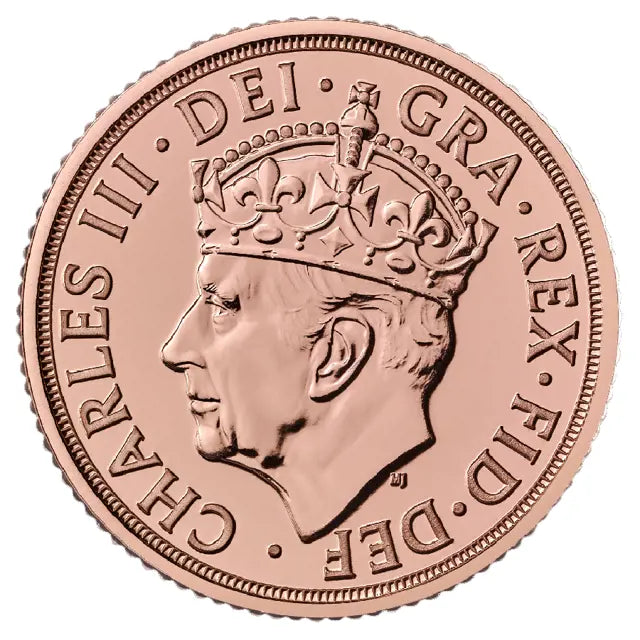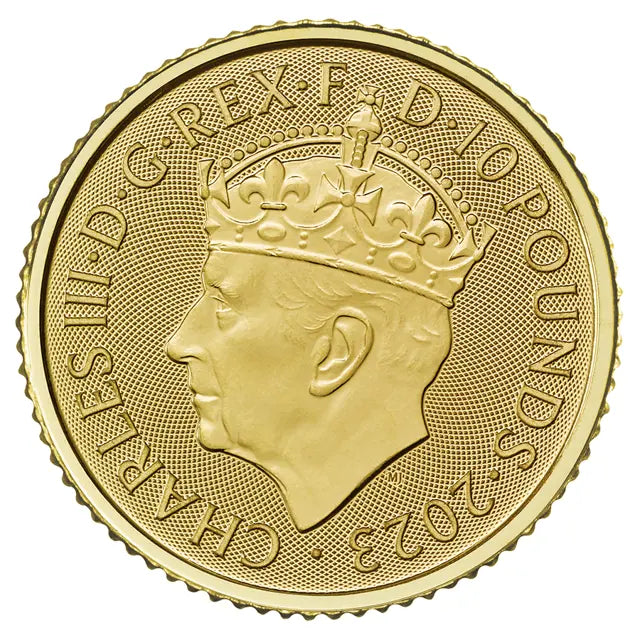
The Precious Metals Week in Review
08/04/2024
Here are your Short-Term Support and Resistance Levels for the upcoming week.
Gold Silver
Support 2185/2138/2112 24.77/24.52/24.08
Resistance 2330/2383/2400 27.55/28.15/28.60
Platinum Palladium
Support 893/879/869 981/948/925
Resistance 942/965/990 1037/1060/1093
1. As gold set another record high, Canadian mining legends Frank Giustra and Pierre Lassonde say the West has lost its power to set the price of gold. With gold futures hitting another record high of above $2,324.80, Giustra and Lassonde pointed to a major shift in the gold market. "The world hasn't woken up yet. The marginal buyer of gold is no longer the U.S. It's no longer Europe. It's China. Between the country's central bank and the Chinese public, China takes up over two-thirds of all the annual production. They are the new marginal buyers. That's where the gold price is set," Lassonde told news outlets recently. BRICS Plus, which now includes Brazil, Russia, India, China, South Africa, Saudi Arabia, Egypt, Ethiopia, Iran, and the United Arab Emirates, can get up one morning and say they are going "to back their collective new currency with gold," which they can now set to create more credit and reserves, Giustra pointed out. A coordinated move by the BRICS Plus against the U.S. dollar could lead to violent results, he warned. "No one wants war, but here's the problem — the U. S. is facing an existential threat. It's a national security issue," Giustra said. "If there's a sudden move towards replacing the U.S. dollar, meaning perhaps a BRICS announcement of a new currency backed by gold, I think then it would react quite violently."
2. U.S. stocks kicked off 2024's second quarter on wobbly feet Monday. The S&P 500 fell 0.2%, while the Dow Jones Industrial Average fell 0.4%. On Tuesday stocks opened lower again, signalling another day in the doldrums as healthcare insurers tumbled and investors faced the chance that an interest rate cut will come later than hoped. The Dow Jones Industrial Average slipped almost 1%, or over nearly 400 points, setting the blue-chip index back from a bid to reach the key 40,000 level. The S&P 500 shed 0.8%, while the tech-heavy Nasdaq Composite fell 1.2%. U.S. bonds continued to struggle, as the yield on the benchmark 10-year Treasury rose to around 4.38%, hovering at its highest levels of 2024. Stocks have made a lacklustre start to the second quarter after racking up a string of records in the first months of 2024. Hotter-than-expected manufacturing readings, which came alongside increases in prices paid, have given weight to growing doubts the Federal Reserve will cut rates in the first half of the year as the U.S. economy shows surprising resilience. An update on job openings data later Tuesday should provide food for thought in the countdown to Friday's jobs report, a key input in the Fed's decision making.
3. The gold market continues to see considerable bullish momentum near record highs as solid economic data has little impact on the precious metal. Monday, the Institute for Supply Management (ISM) said its Services Purchasing Managers Index rose to 50.3 for March, compared to February’s reading of 47.8. The data was stronger than expected, as consensus forecasts looked for only a slight improvement to 48.5%. “The U.S. manufacturing sector moved into expansion for the first time since September 2022. Demand was positive, output strengthened, and inputs remained accommodative,” said Timothy Fiore, Chair of the ISM Manufacturing Business Survey Committee. Although gold prices are down from their intra-day record highs, the market is still showing robust gains for the session. The report showed broad-based gains in its components. The New Orders Index increased to 51.4%, up from 49.2% reported in February. At the same time, the Production Index rose to 55.8%, up from the previous reading of 52.5%. However, the improved activity comes at a cost. The report noted a rise in inflation pressures. The Price Index rose to 55.8, up from February’s reading of 52.5.
4. More than two years after President Joe Biden pledged to build 500,000 electric vehicle charging stations throughout the United States only seven are operational across four states. The Washington Post reported Friday on the sluggish pace the allocated $7.5 billion in infrastructure funds have been put to use. The bulk of the funds, $5 billion, are to go toward building fast chargers along major interstates - what's being called the National Electric Vehicle Infrastructure or NEVI program. To satisfy the federal program's requirements, chargers must be built at least every 50 miles over major highway routes and be operational 97 percent of the time. They also must take credit card payments and certain components must be made domestically. However, after the Bipartisan Infrastructure Law was passed in November 2021, only seven charging stations are operational. They are in Pennsylvania, Ohio, Hawaii, and New York and offer 38 spots for cars to charge. Twelve additional states have been awarded contracts for construction to begin, while another 17 states haven't even submitted proposals.
5. If we want to rely on nuclear fusion to power the world's homes, the first step is making reactors that can run as hot and as long as possible. Now, an experimental reactor called KSTAR in Daejeon, Korea, has set a new world record. The massive doughnut-shaped device, which has been dubbed 'Korea's artificial sun' ran at 100 million°C (180 million°F) for 48 seconds. To put that into perspective, that's seven times hotter than the sun's core. The record-breaking test takes us one step closer to the goal of limitless clean energy. Nuclear fusion reactors around the world are in a race to operate at higher temperatures and for longer, to extract as much energy from the fusion process as possible. They work by colliding heavy hydrogen atoms to form helium, releasing vast amounts of energy - mimicking the process that occurs naturally in the centre of stars like our sun. While using nuclear fusion to power homes and businesses may still be some way off, KSTAR proves that the burning of star-like fuel can be achieved and contained using current technology.
6. U.S. layoff announcements rose 7% in March to the highest since January 2023, led by technology and government-sector job eliminations, a report out on Thursday showed. However, cuts announced year-to-date are down 5% from a year ago amid a still-strong job market. Job cut announcements increased to 90,309 in March from 84,638 in February, it said. On a yearly basis, the level increased slightly by 0.7% from the 89,703 cuts announced in March 2023. Through the first three months of the year, companies have announced 257,254 layoffs, down from 270,416 in last year's first quarter, another indication of a job market that continues to hold up in the face of high interest rates.
7. Oil’s steady climb has prompted speculation that prices could reach $100 per barrel should current market conditions persist. West Texas Intermediate futures were trading above $86 while Brent rose above $91 per barrel, their highest level since October. Brent, the global crude benchmark, is up by about 16% this year amid tight supply, robust consumption and geopolitical risks spanning from Russia to the Middle East. The threat of inflation staying higher for longer has also led to a resurgent interest in commodity markets. U.S. nationwide crude stockpiles rose by 3.21 million barrels last week. That contrasted with an industry group’s forecast for a drop. Gasoline holdings, however, declined by the most since March, spelling higher prices for futures and for American drivers.
8. The euro racked up gains against the dollar Wednesday but faces a tricky path to further upside as European Central Bank members continue to lay out the carpet for a rate cut as soon as June. EUR/USD rose 0.63% to $1.0837. "It's become very difficult for the EUR to rally vs. the USD, and we still see the risk skew pointed to the downside for EUR/USD," Macquarie said in a Wednesday note, flagging recent remarks from ECB members signalling a June rate cut. ECB governor Christine Lagarde opened the door to a June cut at the central bank's Mar. 7 meeting, hinting that should ongoing inflation data continue to point to slowing price pressures, the bank would be able to move into "the dialling back phase of our policy cycle and make policy less restrictive." The most recent EU economic data suggest that the trend of slowing inflation seen earlier this year has persisted, with Euro area inflation slowing to 2.4% from 2.6% in March, the lowest level since the start of the Russia-Ukraine war in February 2022.
9. The Japanese Yen struggles to capitalize on its intraday strength to over a two-week top. A modest USD strength assists USD/JPY to recover early lost ground to sub-151.00 levels. The risk-off mood, along with intervention fears, could limit losses for the safe-haven JPY. Traders now look to the release of the U.S. jobs data (NFP) for some meaningful impetus.
Investors are increasingly concerned about hot economic data and mixed commentary from some Federal Reserve officials could further cause the central bank to scale back the number of interest rate cuts this year. The concerns come as a strong labour report Friday showed the economy generated more jobs than expected in March while the unemployment rate ticked lower and wage growth remained steady, putting the labour market on firmer footing than many economists had predicted. Just hours later, Dallas Fed president Lorie Logan poured more cold water on near-term hopes for an easing of monetary policy. "I believe it’s much too soon to think about cutting interest rates," she said in a speech Friday. "I will need to see more of the uncertainty resolved about which economic path we’re on." Fed Governor Michelle Bowman also voiced concerns Friday, even saying the Fed may need to raise rates at a future meeting if progress on inflation stalls or reverses.
Rising mortgage rates this week cast further doubt on meaningful rate cuts happening soon for homebuyers. The average rate for a 30-year loan inched past 7% this week, settling at 7.07% on Wednesday, according to Mortgage News Daily. A separate measurement tracking weekly average rates rose to 6.82% from 6.79%, Freddie Mac reported. Homebuyers continued to pull back as affordability challenges worsened and consumer optimism diminishes about how soon and how much interest rates could ease this year. Waiting for loan rates to decline is now the top reason buyers say they are not actively searching for a home. Rising mortgage payments across the U.S. — driven by either higher interest rates or higher home prices, or both have considerably cooled buyers' demand.
Securing critical metals for the energy transition has become a matter of national security for many countries. However, Canada is losing this battle. While many countries are facing massive metal shortages, Canada is distracted with overseas investments. For example, Canadian pension funds that represent CAD$2.7 trillion of Canadian savings have more invested in China than they do in Canada. More specifically, Canadian pension funds have less than 3% of their total assets invested in Canadian public companies, down from 28% in 2000. "When you look at the mineral sector in Canada, it's been totally ignored by the government for the last 40 years. Our politicians, both at the federal and the provincial level, couldn't care less about the mining industry," Chairman Emeritus at Franco-Nevada Pierre Lassonde, said. "They say we could lose the race. We've already lost the race." He pointed out that bold action is needed to solve this crisis, but Canada lacks visionary leadership. "Canada is endowed as one of the most prolific mineral countries on the planet, the second largest landmass in the world, and largely unexplored. However, there is almost zero investment in the Canadian mineral sector. It's worrisome. Canada's in danger of losing out in this race for critical minerals," he said.
Volatility should be expected to remain high as investors will be closely watching for hints on upcoming monetary policy direction. Many investors have redoubled their efforts to ensure that their portfolios are sufficiently diversified in the hopes that they will be able to withstand corrections in multiple market sectors. Many of these investors have included physical precious metals as part of their diversification plans, given their long history as a hedge against both inflation and during times of economic turmoil. Remember, the key to profitability through the ownership of physical precious metals is to own the physical product and hold it for the long term. Always remember that you should never overextend your ability to maintain ownership of your precious metals over the long run.
Trading Department – GCILBullion.
This is not a solicitation to purchase or sell.




Leave a comment
This site is protected by reCAPTCHA and the Google Privacy Policy and Terms of Service apply.